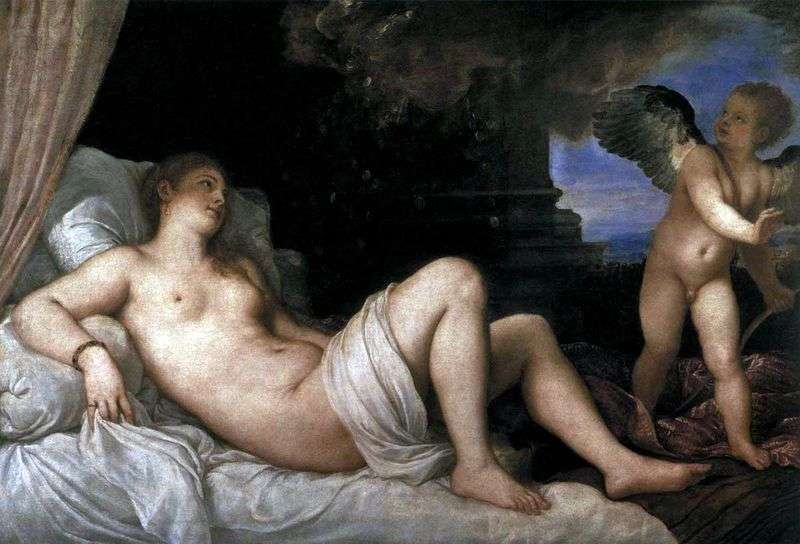
Painting by artist Tiziano Vecellio “Danae” from a series of paintings on poetic themes for the Spanish king. The size of the painting is 119 x 187 cm, canvas, oil. Customer – Philip II of Spain, 1553-1562.
In images devoted to the seemingly affirmation of the sensual pleasures of life, a new tragic note is clearly heard. Already his “Danae” bears new features in comparison with the previous period. Indeed, the “Danae”, unlike the “Venus of Urbino” strikes us with a kind of drama that permeates the whole picture. Of course, the artist is in love with the real beauty of earthly life, and Danae is beautiful, moreover frankly sensual beauty. But it is characteristic that Titian introduces now the motif of a dramatic experience, the motive for the development of passion. The artistic language of the master changes.
Titian boldly takes color and tonal ratios, combining them with luminous shadows. Due to this, it transmits the mobile unity of form and color, a clear contour and a soft volume simulation that help to reproduce a nature full of movement and complex variable relationships. In “Danae” the master still affirms the beauty of man’s happiness, but the image is already devoid of its former stability and tranquility. Happiness is no longer a permanent state of a person, it is found only in moments of a vivid impulse of feelings. No wonder the clear majesty of “Love on Earth and Heavenly” and the calm bliss of “Venus of Urbino” is opposed to the feeling of an excited rush of strong feelings.
Exceptionally expressive comparison of Danai with a rough old servant, who eagerly catches the outstretched apron of a golden rain coin, greedily watching its flow. Cynical self-interest rudely invades the picture: the work dramatically intertwines the beautiful and ugly, the sublime and the low. The beauty of Danae’s humanly bright and free feeling is countered by cynicism and gross covetousness. This clash of characters is emphasized by the contrast of the rough, knobby hand of the old woman and the tender tribe of Danai, almost touching each other.
To some extent, for all the differences in images, Titian here finds a solution reminiscent of the composition of his painting “Caesar’s Dinar”. But there the comparison of the full moral beauty of the image of Christ with the dark ugly face of the Pharisee, embodying rude trickery and low-lying human passions, leads to the assertion of absolute superiority and the victory of the humane principle over the base and cruel.
In the “Danae”, although Titian and asserts the victory of happiness, the forces of ugliness and anger have already acquired a certain independence. The old woman not only contrasts the beauty of Danae, but also contrasts it with her. However, it was during these years that Titian created a new series of his truly beautiful paintings dedicated to the chanting of the sensual charm of female beauty.
 Secular love by Titian Vecellio
Secular love by Titian Vecellio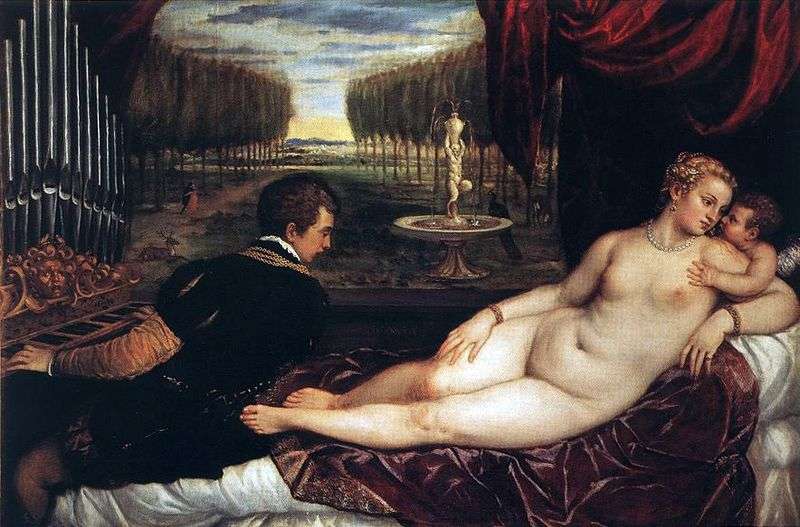 Venera with organist and cupid by Titian Vecellio
Venera with organist and cupid by Titian Vecellio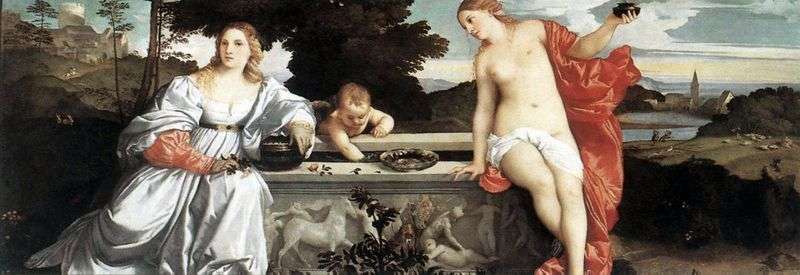 Love of the earth and heaven by Titian Vecellio
Love of the earth and heaven by Titian Vecellio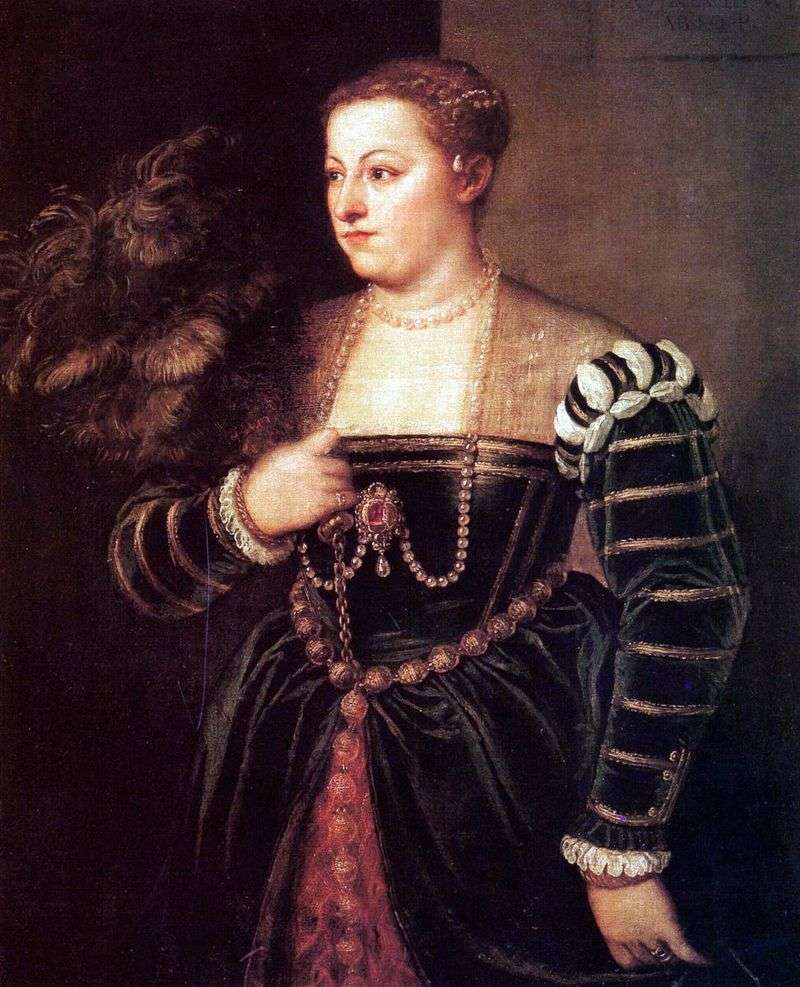 Portrait of the daughter of Titian Lavinia by Titian Vecellio
Portrait of the daughter of Titian Lavinia by Titian Vecellio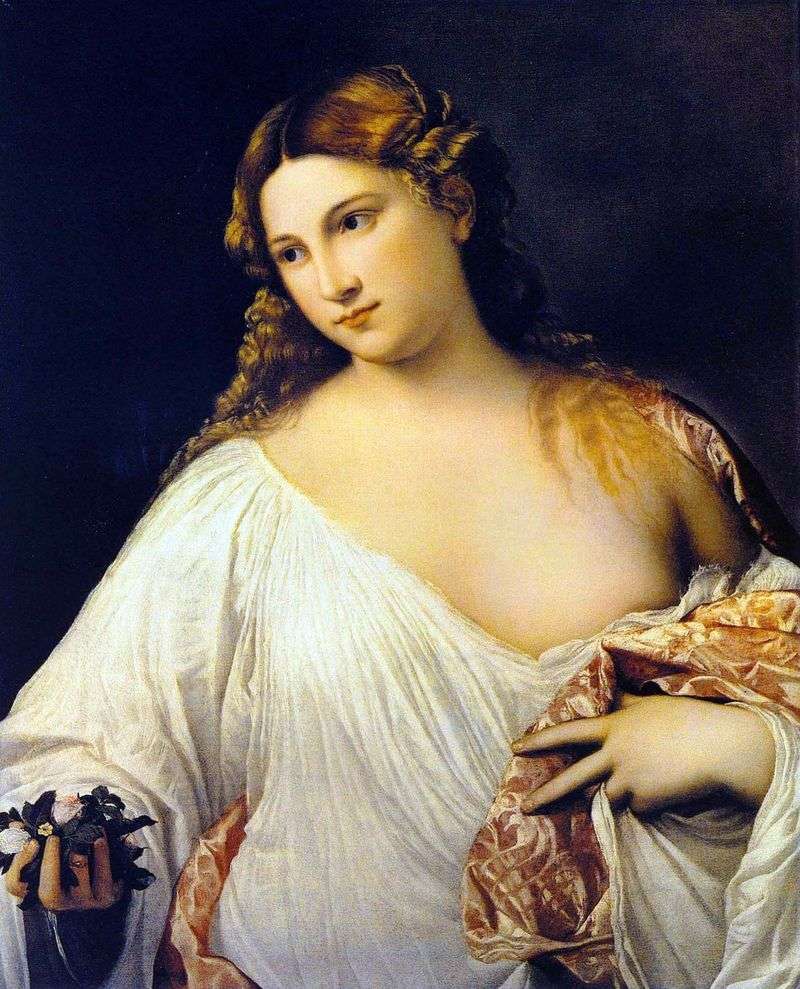 Flora by Titian Vecellio
Flora by Titian Vecellio Venus with a mirror by Titian Vecellio
Venus with a mirror by Titian Vecellio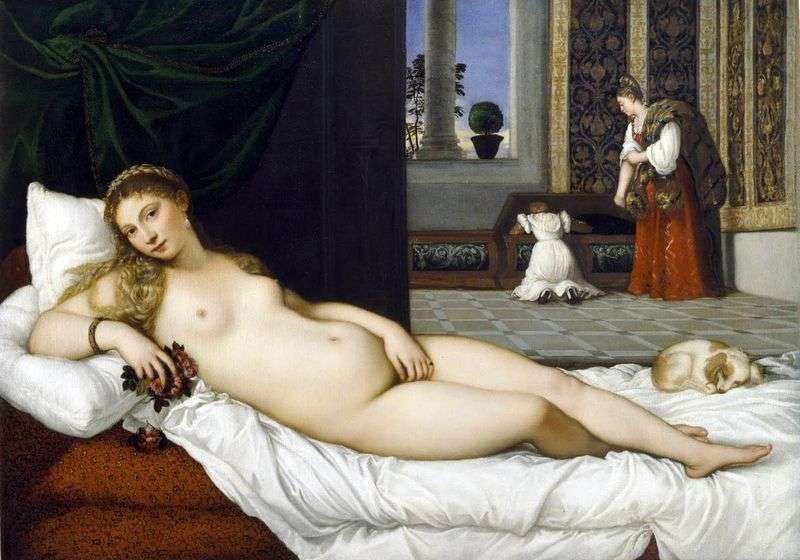 Venus Urbinskaya by Titian Vecellio
Venus Urbinskaya by Titian Vecellio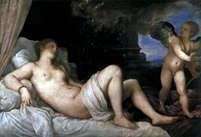 Danae – Titian Vecellio
Danae – Titian Vecellio